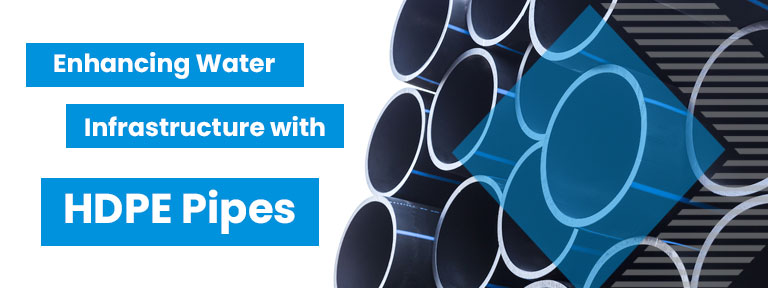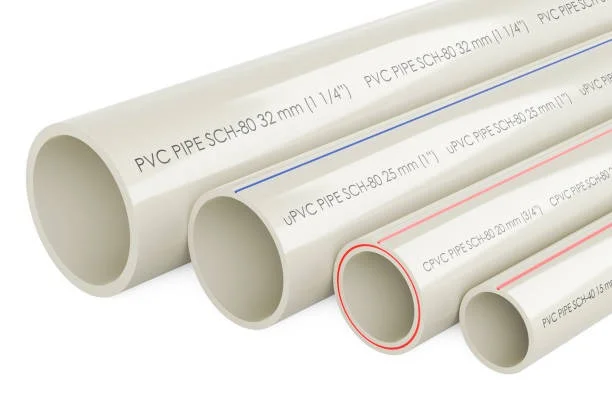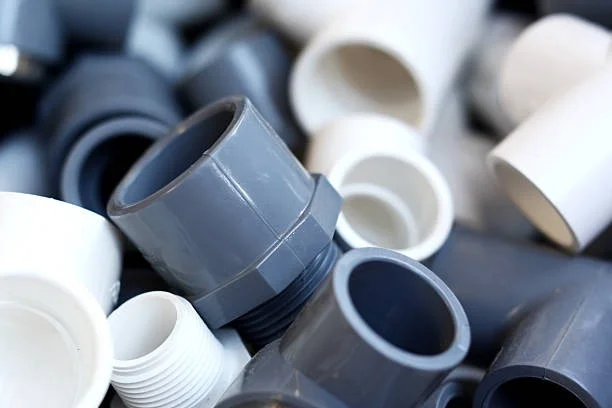Enhancing Water Infrastructure with HDPE Pipes: A Sustainable Solution

As global concerns about water scarcity and infrastructure sustainability continue to grow, the importance of using high-quality materials in water distribution systems becomes paramount. High-density polyethylene (HDPE) pipes have emerged as a remarkable solution for modernizing water infrastructure. This article delves into the various aspects of HDPE pipes, highlighting their usage, benefits, and contributions to creating a more efficient and sustainable water distribution network.

Usage of HDPE Pipes in Water Infrastructure:
HDPE Pipes have gained widespread recognition in the field of water infrastructure due to their exceptional properties and versatility. These pipes are extensively used in various applications, ranging from potable water distribution to wastewater management. One of the key advantages of HDPE pipes is their resistance to corrosion and chemical degradation, ensuring a longer service life compared to traditional materials like metal or concrete. This durability makes them an ideal choice for underground installations, minimizing maintenance and replacement costs.
In addition to their longevity, HDPE pipes are lightweight and flexible, simplifying installation processes and reducing the need for heavy machinery. Their seamless and leak-proof joints eliminate the risk of water loss, ensuring efficient water transport. HDPE pipes also offer excellent hydraulic performance, allowing for a steady flow of water even over long distances. These attributes make HDPE pipes suitable for both urban and rural water infrastructure projects.
Benefits of HDPE Pipes:
- Sustainability: HDPE pipes are environmentally friendly, as they can be recycled and reused. Their long lifespan reduces the frequency of replacements, thus decreasing the overall environmental impact.
- Leak Reduction: The seamless fusion welding technique used for joining HDPE pipes eliminates the risk of leaks, conserving water and reducing the need for constant maintenance.
- Corrosion Resistance: Unlike traditional metal pipes, HDPE pipes are immune to corrosion and chemical reactions, ensuring water quality and safety.
- Flexibility: HDPE pipes’ flexibility allows them to withstand ground movements and settlement, making them suitable for regions prone to earthquakes or soil shifts.
- Cost-Effectiveness: While the initial investment in HDPE pipes may be slightly higher, their long-term benefits, including reduced maintenance and replacement costs, make them a cost-effective choice.
Other Details about HDPE Pipes:
HDPE pipes are manufactured through a controlled process of polymerization, resulting in a high-density material that can withstand varying environmental conditions. The pipes are available in a range of diameters, allowing for customization based on project requirements. They are also resistant to UV radiation, making them suitable for above-ground installations without degradation due to sunlight exposure.
Proper installation techniques are crucial for maximizing the benefits of HDPE pipes. The pipes should be installed following recommended guidelines, ensuring proper embedment, backfilling, and compaction. Thorough quality control measures, including non-destructive testing and joint inspections, contribute to the pipes’ long-term performance.
Innovations in HDPE Pipe Technology:
The field of HDPE pipe manufacturing continues to evolve, leading to advancements in material composition, jointing techniques, and application-specific designs. Modern joining methods, such as electrofusion and butt fusion, enhance the pipes’ structural integrity and reduce installation time. Additionally, research is ongoing to develop HDPE pipes with enhanced resistance to extreme temperatures and chemicals, further expanding their potential applications.
Conclusion: Enhancing Water Infrastructure with HDPE Pipes
HDPE pipes have revolutionized water infrastructure by offering a sustainable, durable, and efficient solution for transporting water. Their corrosion resistance, leak-free joints, and flexibility make them a valuable asset in creating resilient water distribution networks. As technology and research in HDPE pipe manufacturing progress, we can expect even more innovative solutions to address the evolving challenges of water scarcity and infrastructure development. Embracing HDPE pipes not only ensures the longevity and efficiency of water systems but also contributes to a more sustainable and water-secure future for generations to come.
For more information on HDPE Pipes: HDPE Pipes
Recent Posts
Enhancing Water Infrastructure with HDPE Pipes: A Sustainable Solution
Best Plastic Pipes for Water
Types of Plumbing Pipes for Home
Pipes and Fittings
How to Identify HDPE Pipe Quality
How to Get High-Quality Plastic Pipes in Pakistan
PVC Pipes vs UPVC Pipes
Why HDPE Pipes Are Important for Commercial and Industrial Use?
3 Surprising Reasons to Choose Plastic Pipes for Your Home
Plastic Pipe: Every Thing you need to know

As the global demand for sustainable water infrastructure solutions continues to rise, HDPE pipes stand out as a beacon of innovation and reliability. Their unmatched durability, flexibility, and environmental sustainability make them the go-to choice for modernizing water distribution networks worldwide. With ongoing advancements in HDPE pipe technology and manufacturing processes, the future holds even greater promise for addressing the challenges of water scarcity and infrastructure development. By embracing HDPE pipes, communities can ensure the efficient and sustainable transport of water, safeguarding precious resources for future generations. Trust in HDPE pipes for a water-secure tomorrow.

